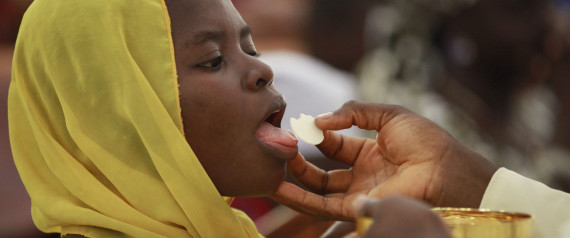Bring them to the Eucharist to be healed
by Roberto Mena
Recently, a man came to me asking for help. He was carrying deep wounds in his soul — emotional ones, not physical. What surprised me at first was that, even though he was deeply wounded, he had not been traumatized in his infancy or his adult life.
Apparently, he’d had to bear the typical blows and bruises that many of us deal with: disrespect, bullying, never being the favorite, dissatisfaction with his own body, disenchantment with his family and siblings, difficulties in his studies, disappointment in his workplace, the sensation of being ignored all the time, having the impression of not being appreciated, and the self-pity and lack of confidence that result from all of the above.
But he was a sensitive man, and the combination of all these seemingly small things had left him, now a late middle aged man, incapable of being the good - natured and happy adult that he wanted to be.
Instead, he admitted that he was habitually trapped in a certain self-absorption; more specifically, a self-centered anxiety that filled him with the sensation that life hadn’t been fair to him.
Consequently, he was always fixated in a certain way on protecting himself, and was resentful of those who could progress confidently in self-confidence and love.
“It bothers me,” he said, “to see people like Mother Teresa and Pope John Paul II talk with such self-confidence about the largeness of their hearts. I always get filled with resentment and think, ‘Lucky you! You haven’t had to bear everything that I’ve had to suffer in life!’”
This man had already received some professional therapy that had brought him to a deeper level of self understanding, but it still left him paralyzed as far as being able to overcome his wounds.
“What can I do with these wounds?” he asked. My answer to him, and to all of us who are wounded, is, “Bring them to the Eucharist.”
Every time that you go to a Eucharistic celebration, you are near an altar, and you receive Communion, bring your defenselessness and your emotional paralysis to God. Ask him to touch your body, your heart, your memory, your bitterness, your lack of self-confidence, your self absorption, your weaknesses, your helplessness.
Bring your sore body and heart to God. Express your defenselessness in simple and humble words:
Touch me. Take my wounds. Take my paranoia. Heal me. Forgive me. Warm my heart. Give me the strength that I cannot give myself.Pray this prayer, not only when you are receiving Communion and you are being physically touched by the Body of Christ, but especially during the Eucharistic prayer, because that is when not only are we being touched and healed by a person, Jesus, but we are also being touched and healed by a sacred event.
This is the part of the Eucharist that we generally don’t understand, but it’s also the part of the Mass that celebrates the transformation and healing of wounds and sin.
During the Eucharistic prayer, we commemorate the “sacrifice” of Jesus; that is to say, the event when, as Christian tradition tells us so enigmatically, Jesus became sin for our sake. There is a lot packed into that cryptic phrase.
In essence: in his suffering and death, Jesus carried our wounds, our weaknesses, our infidelities and our sins; he died in them, and then healed them through love and hope.
Every time we go to the Eucharist, we allow that trans - formative event to touch us, to touch our wounds, our weaknesses, our infidelities, our sin and our emotional paralysis, and it transforms them into healing, energy, joy and love.
The Eucharist is the source of healing where divine mercy becomes manifest. I believe that there is great merit in different kinds of physical and emotional therapy, just as there is immeasurable merit in 12-step programs like Alcoholics Anonymous and in sharing our wounds simply and honestly with people whom we trust.
There is also, I believe, merit in a certain strong-willed effort, in the challenge contained in Jesus’ command to the paralyzed man: take up your stretcher and walk. We must not allow ourselves to be afflicted by paralysis due to hypersensitivity or self-pity. God has given us skin to cover our most sensitive nerves.
But, even granting that, we still can’t cure ourselves.
Therapy, self-knowledge, close friends, and disciplined effort can only take us so far, not all the way to complete healing. Complete healing comes from touching and being touched by the sacred.More specifically, as Christians, we believe that this touch involves a touch of the sacred in that place where God “became sin for our sake.” That place is the death and resurrection of Jesus.
That event becomes available to us, to touch it and enter it, during the Eucharistic Prayer, and when we receive the body of Christ in Communion.
We need to bring our wounds to the Eucharist, because that is where the sacred love and energy that underlie everything that lives and breathes can cauterize and cure everything in us that is unhealthy.



No comments:
Post a Comment